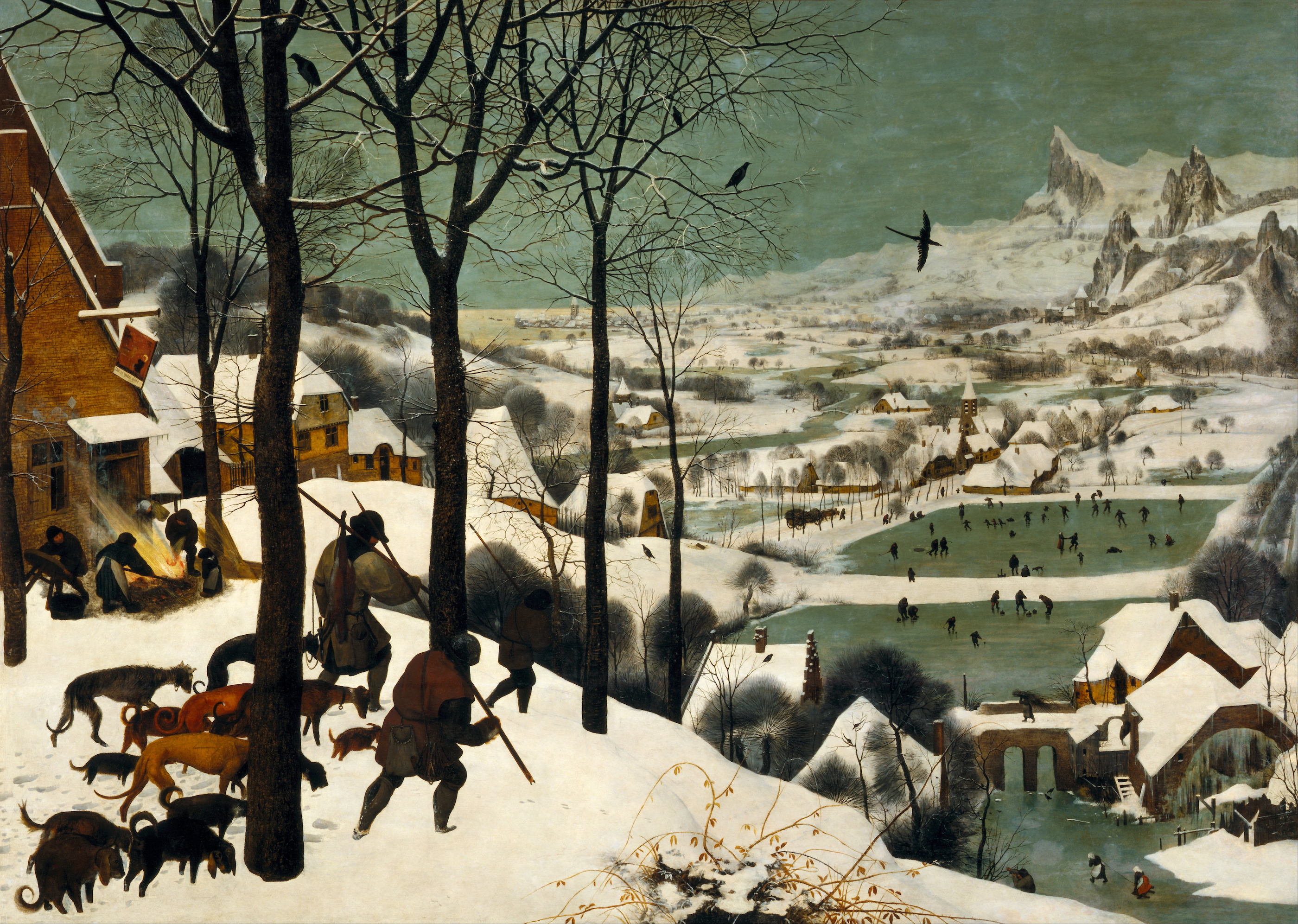Today is the big day for us - please update your apps (iOS and Android) as from today on, DailyArt will be published in new languages: Italian, French, Portuguese, Spanish and Turkish! Tell your family and friends! We still need to translate some of the archival DailyArts but the new ones published every day will be translated :) All this thanks to our translators - you can see their names on the about screen (swipe right) :) Also, if we survive this, I can promise we will launch new languages in 2019!
Today is also my birthday, and we present one of my favorite paintings - Hunters in the Snow, which is on show in Kunsthistorisches Museum now, on the huge Peter Bruegel the Elder exhibition. We also have another surprise for you - we have prepared a movie with today's description, you can see it here. So many things to celebrate :D Enjoy!
With decidedly meagre spoils – a small red fox – three hunters return from the hunt. The path leading from the hill to the village below is arduous, and their heavy steps leave deep prints in the wet, ankle-high snow. Followed by their plodding pack of hounds, they pass an inn in front of which – immediately below a crooked sign with the inscription ‘Dit is guden Hert’ (‘The Golden or Good Hart’) and Saint Hubertus (or Saint Eustace, the patron saint of hunters) – preparations for the scorching of swine are being made. A straw fire burns, and the traditional wooden tub stands ready for the slaughter. No swine are (yet) to be seen, however. A bird trap is laid in the middle ground of the snowy landscape, a further play on hunting. In the valley, young and old pursue activities typical of the season. Several make preparations against the cold and collect firewood: for instance, the woman on the bridge who shoulders a bundle of sticks. Others enjoy themselves on the ice, skating or playing kolf. In no other composition in the series are pastimes depicted as extensively as in Winter. Because of the weather the fields could not be worked in this season, so that more free time was therefore available. The winter conditions redefine the landscape. The mantle of snow covers the surrounding meadows, accents the tree branches, emphasizes the forms of the pointed roofs and waywardly contours the silhouettes of the background mountains. Thick icicles have claimed the mill wheel at the right edge and brought it to a halt, as though time itself has frozen. The icy surfaces of the ponds and bodies of water extending in the background of the landscape mirror the blue-green sky, and insert notes of delicate colour.
Bruegel’s palette masterfully suggests the typical wintery atmosphere of a landscape in deep snow: the white snow blanket dominates the composition, while the silhouettes of the hunters and trees in the foreground offer strong, precise contrasts. Through the elevated viewpoint, which allows the viewer’s gaze to sweep through the icy air to the high mountains in the background, the painter creates a powerful impression of depth and expanse. The difference in scale between the foreground figures and those of the much smaller staffage in the rest of the composition contributes decisively to this effect, as does the dark silhouette of the wet-looking bird in the right foreground that moves through the clear air as in a snapshot, and strikingly contrasts with the snow-bedecked mountains of the background. While Bruegel’s entire series powerfully depicts the connections between the seasons and the cycle of human life, Winter illustrates the human connection with the course of nature perhaps more intensely than any other picture in the group.
The Hunters in the Snow panel, the earliest large-format winter landscape in western painting, has become the prototypical picture of winter. As a milestone on the path to the secular representation of the seasons, it highlights the series’ general significance in the gradual secularization of the landscape.


 Pieter Bruegel the Elder
Pieter Bruegel the Elder